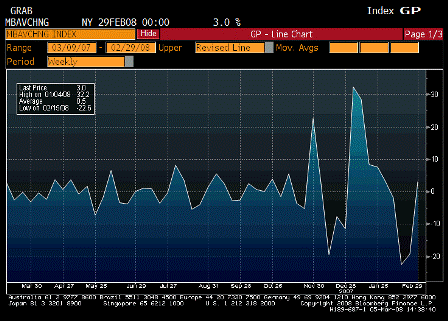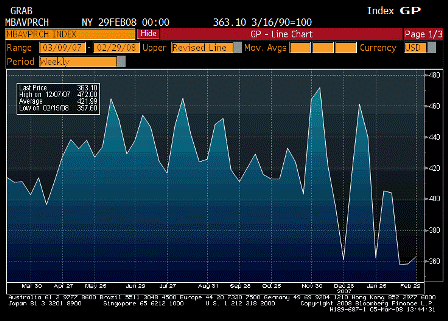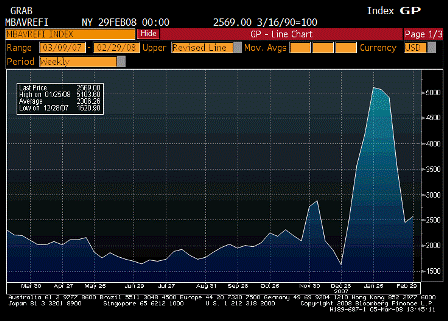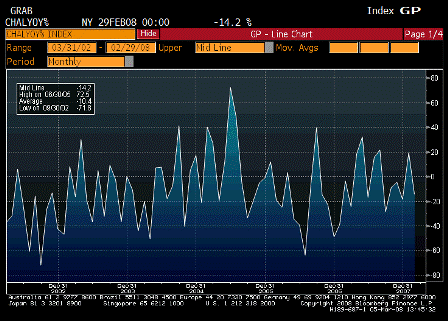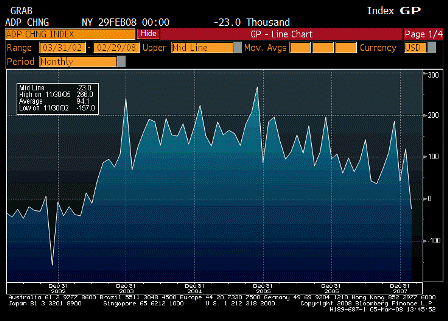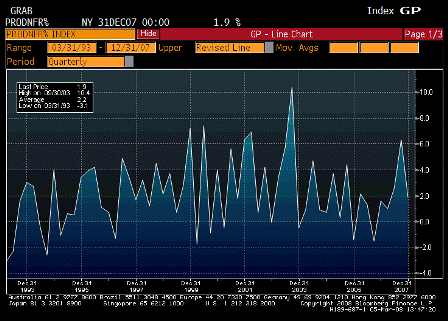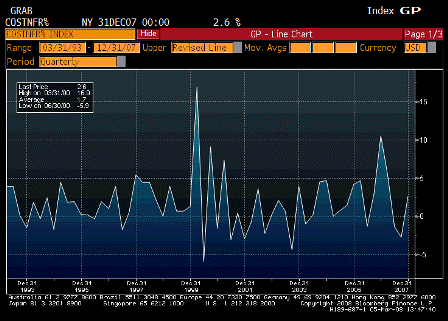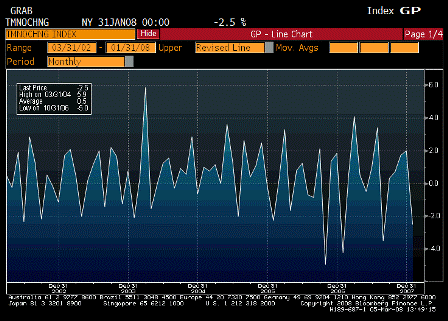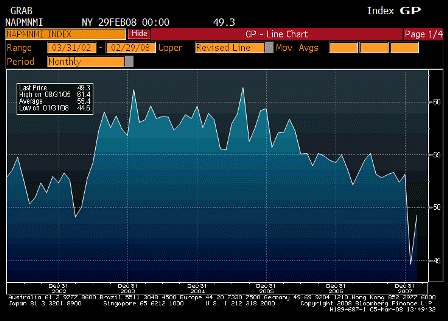Yes, Fisher is on record as the lead inflation hawk.
If he’s right and it turns out Bernanke cut rates into a 70’s style inflation Fisher has to be a leading candidate for Fed Chairman. Much like when Volcker replace Miller in 1979. And Kohn gets passed over a second time, this time for missing the inflation surge, if it happens.
Too early to tell which way it will go. I give the odds to inflation, whether the economy strengthens or weakens.
Bernanke is betting his career that the economy will weaken and bring inflation down. And, as he stated last week, ‘and the futures markets agree.’
Dallas Fed President Fisher argues inflation greatest threat to economy, while Fed Governor Mishkin says recession risks are greater than central bank’s forecast.
by Chris Isidore
 |
| The central bank’s decision to slash rates are raising inflation fears as the economy shows signs of slowing. Play video |
NEW YORK (CNNMoney.com) — Two members of the Federal Reserve’s rate-setting body gave conflicting speeches Tuesday as to whether rising inflation or a recession is the greater risk for the economy.
Inflation risk greater Dallas Federal Reserve President Richard Fisher said Tuesday he believes inflation is a greater threat, saying he would accept a slowdown of the U.S. economy in order to keep price pressures in check. The remarks suggest that Fisher, a so-called inflation hawk, will keep pushing his Fed colleagues to stop cutting rates.
But Frederic Mishkin, a Fed governor and a close ally of Fed Chairman Ben Bernanke, argued in a speech to the National Association for Business Economics that the risks are so great that the economy will not be able to meet even the Fed’s modest forecast, which essentially calls for little or no growth in the first half of the year. He argued price pressures remain in check and that the threat from inflation should wane in upcoming years.
The Fed made a 0.75 percentage point rate cut at an emergency meeting Jan. 21, and another half-point cut at the conclusion of the Jan. 29-30 meeting. Fisher, who joined the Federal Open Market Committee for the two-day meeting, was the sole vote against that cut.
The FOMC is next set to meet March 18, and investors are widely expecting another half-point cut at that meeting.
In remarks prepared for a speech in London, Fisher said that he’s upset by talk that recent Fed rate cuts represent an “easy money” policy by the U.S. central bank.
“Talk of ‘cheap money’ makes my skin crawl,” he said in his prepared remarks. “The words imply a debased currency and inflation and the harsh medicine that inevitably must be administered to purge it.”
“So you should not be surprised that I consider the perception that the Fed is pursuing a cheap-money strategy, should it take root, to be a paramount risk to the long-term welfare of the U.S. economy,” he added.
Fisher points out that yields on long-term bonds have risen, not declined, in the wake of the Fed rate cuts, a sign of growing concern about inflation – although he conceded that traders could be mistaken about the effect of the cuts on prices.
“Twitches in markets that have occasionally led me to wonder if they were afflicted with the financial equivalent of Tourette’s syndrome,” he said.
But Fisher said inflation readings have not been encouraging and that he believes price pressures can continue to build even in the face of an economic slowdown, an economic condition popularly known as “stagflation.”
Fisher argues it’s better to have the economy go into an economic downturn than to risk a pickup in inflationary pressure through low rates due to global forces.
“We cannot, in my opinion, confidently assume that slower U.S. economic growth will quell U.S. inflation and, more important, keep inflationary expectations anchored,” he said. “Containing inflation is the purpose of the ship I crew for, and if a temporary economic slowdown is what we must endure while we achieve that purpose, then it is, in my opinion, a burden we must bear, however politically inconvenient.”
Recession risk greater But Mishkin said he believes the economy is at greater risk than seen in the Fed forecast released last month which called for modest growth between 1.3% to 2% between the fourth quarter of 2007 and the end of this year.
“I see significant downside risks to this outlook,” he said. “These risks have been brought into particularly sharp relief by recent readings from a number of household and business surveys that have had a distinctly downbeat cast.”
The Fed governor argues that the housing prices are at risk of falling more than forecasts, and that if that happens, he believes it will put a crimp in both consumer confidence and their access to credit. He said that the declines also could create greater upheaval in the financial markets, which he argues “causes economic activity to contract further in a perverse cycle.”
Mishkin also said he expects the problems in the economy to cause a rise in unemployment. And while he believes the Fed needs to keep an eye on inflation pressures, he doesn’t believe they pose a significant threat anytime soon.
“By a range of measures, longer-run inflation expectations appear to have remained reasonably well contained even as recent readings on headline inflation have been elevated,” he said.
“I expect inflation pressures to wane over the next few years, as product and labor markets soften and the rise in food and energy prices abates,” he added. He also said he believes that inflation measures that strip out volatile food and energy prices should be close to 2% a year going forward, which is the upper end of what is generally believed to be the Fed’s comfort zone that leaves the door open for further rate cuts.

